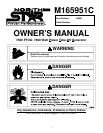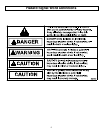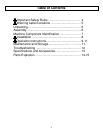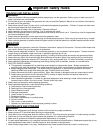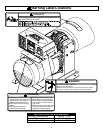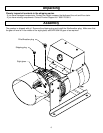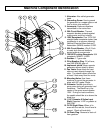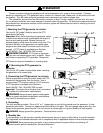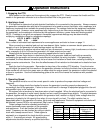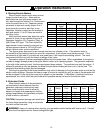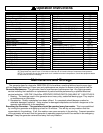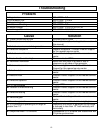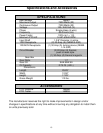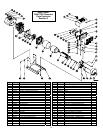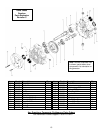
8
Mounting holes (4)
Max. 15°
Max. 15°
Top View
Side View
Driveline
Installation
Choose a location where the generator will not be exposed to rain, snow or direct sunlight. Common
places for mounting your PTO generator are to a trailer or a cement slab. Make sure it is as close to the load
as possible. This will make using the generator more convenient and reduce voltage drop.
The installation site must be free from water, moisture, or dust. Foreign matters, such as dust, dirt, sand,
lint, or abrasive materials can cause damage if allowed inside the generator. All electrical components should
be protected from excessive moisture or the insulation system will deteriorate and result in shorting out of the
generating system.
1. Mounting the PTO generator to a trailer.
Use four(4) 5/8” grade 5 bolts to secure the PTO
generator to the trailer.
Important: When trailer mounting the generator, select
a trailer that is wide enough to withstand the torque of
start-up and loading torque. Wheels that are not
spaced properly could cause the trailer to tip over. The
constant vibration of the generator can cause metal
fatigue of the trailer base if the steel used is not thick
enough. A PTO trailer is available from Northern,
Item# 165959. Call 1-800-556-7885 to order.
WARNING DANGER PTO trailer or generator
may tip over and cause serious injury or death. Never
stand near an operating PTO generator. Always bolt
PTO base to a secure foundation or mounting slab
.
2. Mounting the PTO generator to
concrete.
Use four(4) 5/8” grade 5 anchor bolts when mounting
the generator on a cement slab.
3. Connecting the PTO generator to a tractor.
After the generator is firmly mounted, attach the PTO
driveline to the generator then the tractor. Use a
synchronized PTO driveline rated at 14 HP minimum.
A PTO driveline is available from Northern,
Item# 165936. Call 1-800-556-7885 to order.
Important: The angle of the driveline shall not exceed
15
o
in either the horizontal or vertical plane.
WARNING Always properly guard rotating parts.
Failure to guard the power transmission mechanisms
may result in serious injury or death.
4. Grounding
This unit must be grounded. Drive a 3/4” or 1” copper pipe or rod into the ground near the generator. It must
penetrate moist earth. Connect an approved ground clamp to the pipe. Run an 8 gauge copper wire from the
clamp to the generator ground screw. Do not connect to a water pipe or a ground used by a radio system.
WARNING Always ground the generator. Electrical shock can kill.
5. Standby Use
If your generator is to be used as a standby electric power source in case of utility failure, it must be installed
by a registered and licensed electrician and in compliance with all applicable state and local electrical codes.
WARNING Never connect any generator to any existing electrical system without an isolating, UL
approved transfer switch installed by a licensed electrician.



